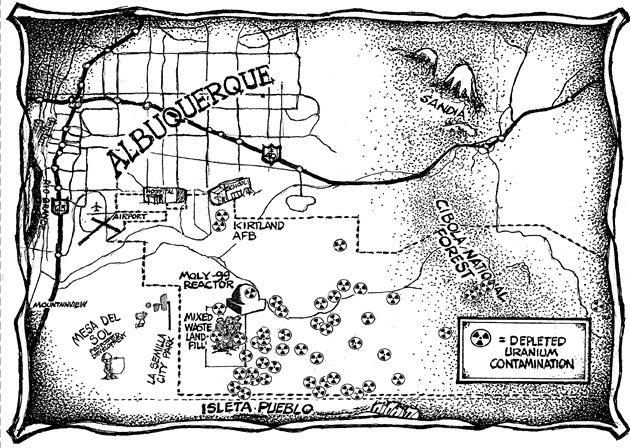
Government Accountability Project (GAP)
The Government Accountability Project (GAP) is one of 39 environmental and peace organizations that won a landmark lawsuit against the U.S Department of Energy for failure to follow-through on adequate environmental cleanup during its 50+ years of nuclear weapons research, testing, and production. Part of this settlement was the establishment of the MTA Fund (Citizens’ Monitoring and Technical Assessment Fund), which provided $6.25 million for tribes and non-profit organizations to assess and conduct independent technical and scientific studies regarding the multitude of technical, ecological, and health issues surrounding the nation’s nuclear weapons complex.
Clark University was chosen by the non-profit peace and environmental groups as the conservator of these reports to ensure they remain available to the public in perpetuity. The unconventional election of university as conservator is an innovative example, particularly within the era of Web 1.0, of higher education as protector and provider of information through wide dissemination.
The research and reports available in this series were conducted by the Government Accountability Project (GAP) with their allocated portion of the MTA fund.
If you have any questions or concerns please contact us at digitalrepository@clarku.edu.
-

Final Report: Citizens Monitoring of Columbia River Radionuclides
Government Accountability Project, Marco Kaltofen, and Tom Carpenter
The findings of this report include:
Radionuclide levels were higher in some offsite plant and animal tissues than had been previously reported for the Hanford site. These levels reach unacceptably high concentrations for plants such as mulberries, reinforcing mulberry plant data from past studies.
The size of the offsite area showing increased radionuclide concentrations also appears to be higher than previously reported, apparently including areas which lie upstream of the site on the Columbia River.
Increased levels of plutonium, strontium, mercury and beryllium (nonradioactive metals), uranium, and cesium were detected in both biological and mineral samples. The finding of plutonium in freshwater asian clams in particular requires further study.
Testing done on household attic dusts indicates that these may be an excellent indicator of past exposure to airborne radionuclides from Hanford.
-

Trouble in the Columbia Riverbed: Increasing radioactivity under the Hanford Reach
Government Accountability Project and Norm Buske
The public has expressed concern that radioactivity from Hanford’s wartime nuclear weapons production might contaminate salmon spawning grounds in the Columbia River. Salmon hatchlings (alevin) grow among the gravels in the riverbed, where they are susceptible to environmental stresses that include toxic chemicals and radioactivity. Some people worry that radioactivity from Hanford will damage the alevin genetically and slowly reduce the strength of the salmon stock.
In 2001, The RadioActivist Campaign (TRAC) found a radioactive fingerprint (europium-152) of old Hanford nuclear waste in 60% of sediments lying under the Hanford Reach and in 7 of 10 major salmon spawning areas. Those results prompted this laboratory study, to examine the water in which the salmon alevin live. The question was, What radioactivity dissolves from contaminated Hanford Reach riverbed sediments into the riverbed water?
These results remind us that the Columbia River runs through Hanford Site, the most contaminated place in North America. As more of Hanford’s historical impacts on the Columbia River are discovered, Hanford Site becomes ever more clearly an unwise choice for a waste disposal site, for the present and for our future.
This research was completed money allocated during Round 3 of the Citizens’ Monitoring and Technical Assessment Fund (MTA Fund). Clark University was named conservator of these works.
If you have any questions or concerns please contact us at digitalrepository@clarku.edu
-

Hanford Radioactivity in Salmon Spawning Grounds
Government Accountability Project and Norm Buske
The public has expressed concern that radioactivity from Hanford’s wartime nuclear weapons production might contaminate salmon spawning grounds in the Columbia River. Salmon hatchlings (alevin) grow among the gravels in the riverbed, where they are susceptible to environmental stresses that include toxic chemicals and radioactivity. Some people worry that radioactivity from Hanford will damage the alevin genetically and slowly reduce the strength of the salmon stock.
In 2001, The RadioActivist Campaign (TRAC) found a radioactive fingerprint (europium-152) of old Hanford nuclear waste in 60% of sediments lying under the Hanford Reach and in 7 of 10 major salmon spawning areas. Those results prompted this laboratory study, to examine the water in which the salmon alevin live. The question was, What radioactivity dissolves from contaminated Hanford Reach riverbed sediments into the riverbed water?
This research was completed money allocated during Round 1 of the Citizens’ Monitoring and Technical Assessment Fund (MTA Fund). Clark University was named conservator of these works.
If you have any questions or concerns please contact us at digitalrepository@clarku.edu


